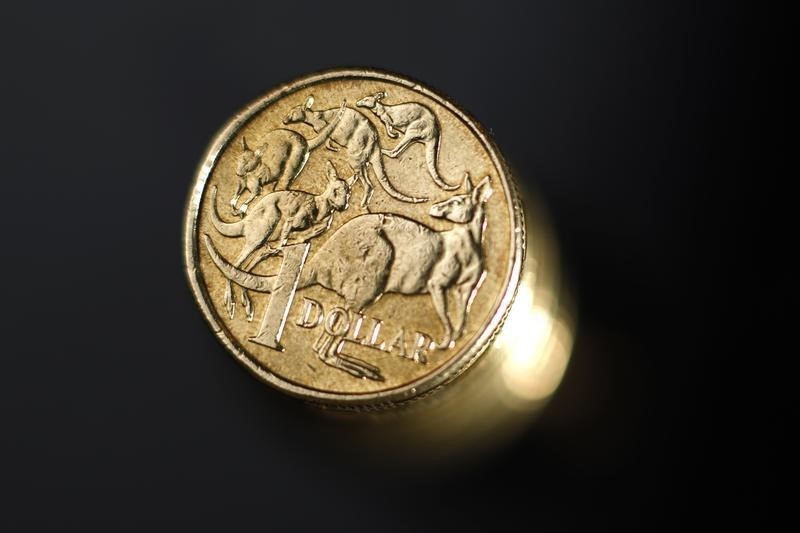Investing.com - The Aussie held lower in early Asia on Monday in a light data day with weekend comments by policymakers out of China being parsed on prospects for monetary easing and stimulus.
AUD/USD traded at 0.7594, down 0.18% with the currency closely linked th China's economic outlook, while USD/JPY changed hands at 111.54, down 0.01%.
In the week ahead, market players will be turning their attention to Friday’s final reading on U.S. fourth quarter gross domestic product for fresh indications on the
strength of the economy.
Reports on U.S. durable goods orders and home sales will also be in focus, as investors attempt to gauge if the world's largest economy is strong enough to withstand
further rate hikes in 2016.
Traders will also be paying close attention to a number of speeches from key Fed officials this week, including James Bullard, Dennis Lockhart, Jeffrey Lacker, Charles Evans
and Patrick Harker.
Meanwhile, market players will be looking to Tuesday’s survey data on euro zone business activity as well as fresh readings on German economic sentiment for
indications on the health of the region’s economy. U.K. consumer price inflation and retail sales data will also be in focus.
Markets are closed Friday for Good Friday. Below-average trade volume in a holiday-shortened week could exacerbate any moves and increase volatility.
The U.S. dollar index, which measures the greenback’s strength against a trade-weighted basket of six major currencies, was last quoted at 95.08.
Last week, the dollar recovered from a five-month low against a basket of the other major currencies on Friday, as investors bought back greenbacks ahead of the weekend
following an aggressive selloff earlier in the week.
The Fed scaled back forecasts for how high interest rates will rise this year following the conclusion of its policy meeting on Wednesday, citing the potential impact from
weaker global growth and financial market turmoil on the U.S. economy.
Investors and economists dialed back their own rate hike expectations in wake of the Fed’s surprisingly dovish outlook, with traders of interest-rate futures now seeing
no rate rise before September.
Against the yen, the greenback edged up off the prior session’s 17-month lows on Friday after Japanese Finance Minister Taro Aso said that he would closely watch foreign
exchange market moves, sparking speculation that the Bank of Japan had intervened in currency markets.
Earlier in the day, the minutes of the Bank of Japan’s January policy meeting showed that policymakers made two proposals, one to expand the bank's asset-buying program
and another to add negative interest rates to asset
purchases.
According to the minutes, the BoJ eventually decided to adopt the negative interest rate policy after several members argued the move would help prevent external
factors from delaying the eradication of Japan's "deflationary mindset".
